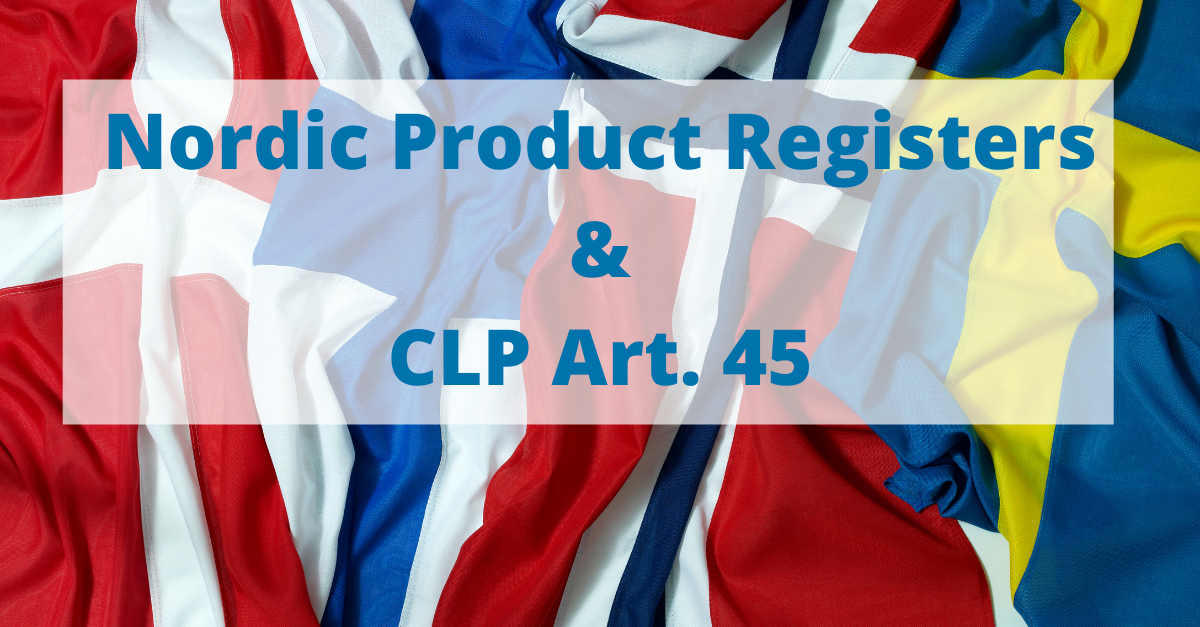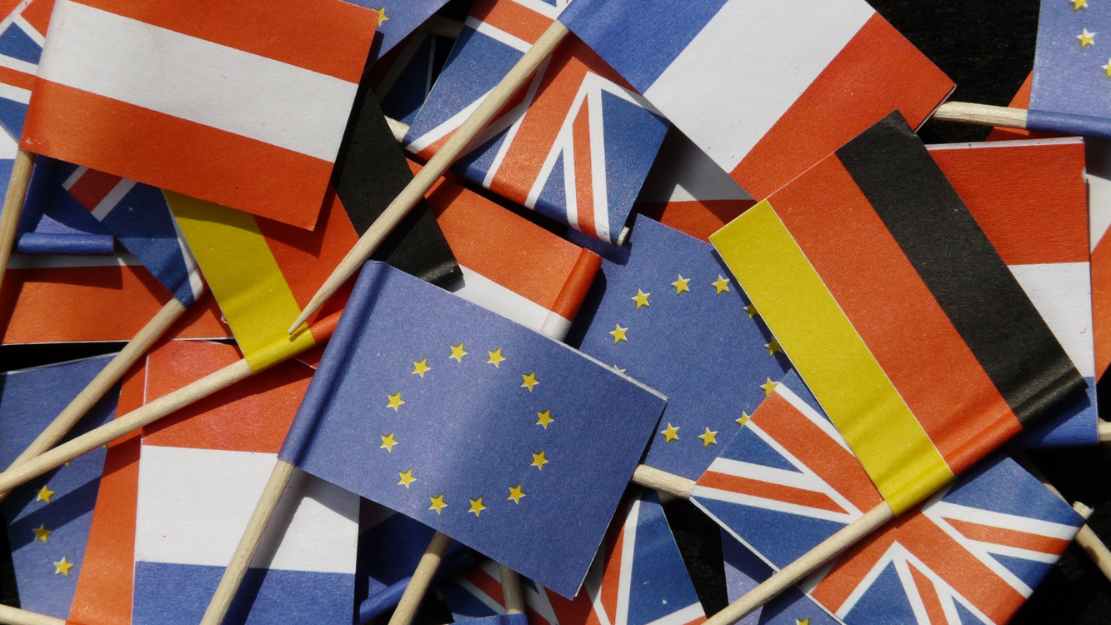Future of Nordic Product Registers in the Context of CLP Art. 45

The Nordic Product Registers are among the most extensive chemical product registers in the world in terms of the required information as well as the quantity of registered products and substances. Well over 2,000 companies are obliged to report to the national authorities annually. Recent developments regarding legislation and the use of technology raise the question about the future of the Nordic Product Registers. In interaction with affected companies we identified three main areas of interest:
- How will the implementation of CLP Art. 45 (harmonization of Poison Centre Notification) affect the Nordic Product Registers?
- Will collaboration among the Nordic countries lead to a harmonization of formats and portals?
- Can the process of product registration be simplified with the use of (recently established) web portals?
This article presents our findings about the Nordic Product Registers and answers the issues mentioned.
Basic Information About Nordic Product Registers
Nordic Product Registers are central national registers that keep information about chemical substances and products. This list shows the relevant countries including their respective national authority:
| Country | Register Name | National Authority |
|---|---|---|
| Sweden | Products Register | Swedish Chemical Agency (KEMI) |
| Norway | The Product Register | Norwegian Environment Agency |
| Denmark | Product Registry | Danish Working Environment Agency (WEA) |
| Finland | Chemical Product Register | Safety and Chemicals Agency (Tukes) |
The information kept in the national registers is used for various purposes:
- The information is used by national poison centres.
- National authorities will analyze data and draw conclusions regarding future legislation.
- Data of national product registers is aggregated and submitted into a publicly available database called Substances and Products in Nordic Countries (SPIN).
Although there are some similarities, it is important to note that the Nordic Product Registers consist of four independent, national registers. These registers have significant differences in relation to notifiable chemicals as well as the scope and procedure of notification.
Similarities and Differences Between Registers
The following table summarizes essential information regarding obligated parties, notifiable chemicals, and notification procedures for each country’s Product Register.
| Category | Sweden | Norway | Denmark | Finland |
|---|---|---|---|---|
| Who is obliged to report? |
|
|
|
|
| Which products must be declared? |
|
|
|
|
| What kind of information needs to be submitted? |
|
|
|
|
Some of these differences seem minor but have major implications. For example, Sweden bases its classification of hazardous chemicals on custom tariff codes (list of goods appended on national regulation; Swedish only) instead of CLP or REACH regulation. Since this list includes a broad range of chemicals, Sweden has by far the highest number of reported products among the Nordic countries (> 90,000 per year versus ~18,000 in Norway and ~36,000 to 38,000 in Finland and Denmark).
In the second part of this article, we will discuss the impact of recent developments, both in terms of legislation as well as technology, on the future of the Nordic Product Registers.
Impact of CLP Article 45
CLP Article 45 builds the legal foundation for submitting information about hazardous mixtures to national poison centres. This year, CLP Regulation has been amended with (EC) No 542/2017, which will lead to a harmonization of information that must be provided to poison centres. For this purpose, ECHA is currently developing a harmonized XML format that will replace national information requirements.
Furthermore, ECHA conducted a feasibility study and recommends the implementation of a central notification portal, which if approved, is currently planned to go live in the beginning of 2019. This portal would act as a single point of contact for submitting poison centre notifications, which will be subsequently distributed to national appointed bodies. However, participation of member states is not mandatory, so they might opt-out.
This raises the question if Nordic Product Registers will continue to exist independently. We directly contacted the national authorities and asked them about the future of their respective national product registers. All of them answered that their national product registries will continue to exist independently of the EU central notification portal.
Nevertheless, CLP Annex VIII specifies which information has to be submitted to national poison centres (not only for Nordic, but all European poison centres) starting from 2020. Given the differences between CLP Annex VIII and Nordic Product Registers requirements, Nordic countries might change the information as well as the format required for poison centre notification.
In this context, it is also quite interesting to notice the differences between the requirements stated in the CLP regulation and national legislation for product registers.
- The national product registers contain more information. This includes substances and mixtures whereas CLP Article 45 (1) only requires mixtures.
- Additional information about chemicals regarding quantity must be submitted for Nordic Product Registers.
- CLP only concerns health risks while some of the Nordic Product Registers (e.g. Sweden) also use this information for elaborating environmental risks.
The resulting differences in requirements might explain the continuation of national product registers.
Harmonization Among Nordic Countries
 Several years ago the Nordic Product Register Group proposed a harmonization of the Nordic Product Registers. These efforts resulted in Use Categories Nordic, which is used as harmonized product type codes among the Nordic countries. However, there are still significant differences between the product registers in the Nordic countries. We already established that each of the Nordic Product Register will continue to exist in addition to the planned EU portal. Could there be further harmonization among product registers for Nordic countries only?
Several years ago the Nordic Product Register Group proposed a harmonization of the Nordic Product Registers. These efforts resulted in Use Categories Nordic, which is used as harmonized product type codes among the Nordic countries. However, there are still significant differences between the product registers in the Nordic countries. We already established that each of the Nordic Product Register will continue to exist in addition to the planned EU portal. Could there be further harmonization among product registers for Nordic countries only?
We directly addressed this question to the national authorities too. All of them answered that there will be no harmonization of Nordic Product Registers (in whatever form) in the foreseeable future.
New Means of Notification with Web Portals
In the last few years, all four Nordic countries have enforced their efforts to build national web portals to submit information for product registers. Sweden and Denmark already have their web portals in productive use, whereas Finland “aims to have the system in full use by 2020”. Norway currently has limited the use of its web portal to domestic countries, but will make it available to foreign companies “sometime in 2017”. The figure below illustrates the timeline of supported means of product notification for each Nordic country.
Web Portals for Nordic Product Registers
Web portals enable companies to submit information to national authorities through a digital, standardized interface. In addition, all four web portals support mass notifications via the upload of files in specific formats (mostly XML) as well. This enables companies to pool several single notifications into a bundle and reduce submission efforts. Mass upload via XML files also offers companies the opportunity to facilitate their existing EHS data to automatically generate completed XML files, which significantly decreases the complexity and efforts of notification. However, this requires a dedicated software solution.
opesus EHS Product Notification is such a solution that leverages existing EHS data for poison centre notification. This software can be integrated into an existing SAP EH&S system and customized according to individual needs. This enables compliance in a simple and efficient manner for different formats (currently for Germany and Switzerland). In 2018, the EU format will be supported as well. Nordic countries are not currently supported; however, an adjustment would easily enable the functionality on an as-needed basis. If you are interested in more information, please contact us.
Summary
The Nordic Product Registers are among the most comprehensive registers for chemical products in the world. Although the term might imply a harmonized system, each Nordic country has its own national product register. These registers share some similarities, but also show serious differences in terms of notifiable chemicals, required information, and notification procedures. Each country recently invested in web portals as a new interface for product notifications. These portals also enable mass notification with specified formats. All four of the national product registers will continue to exist independently of the planned EU portal for poison centre notifications and there will be no further harmonization between Nordic countries.



